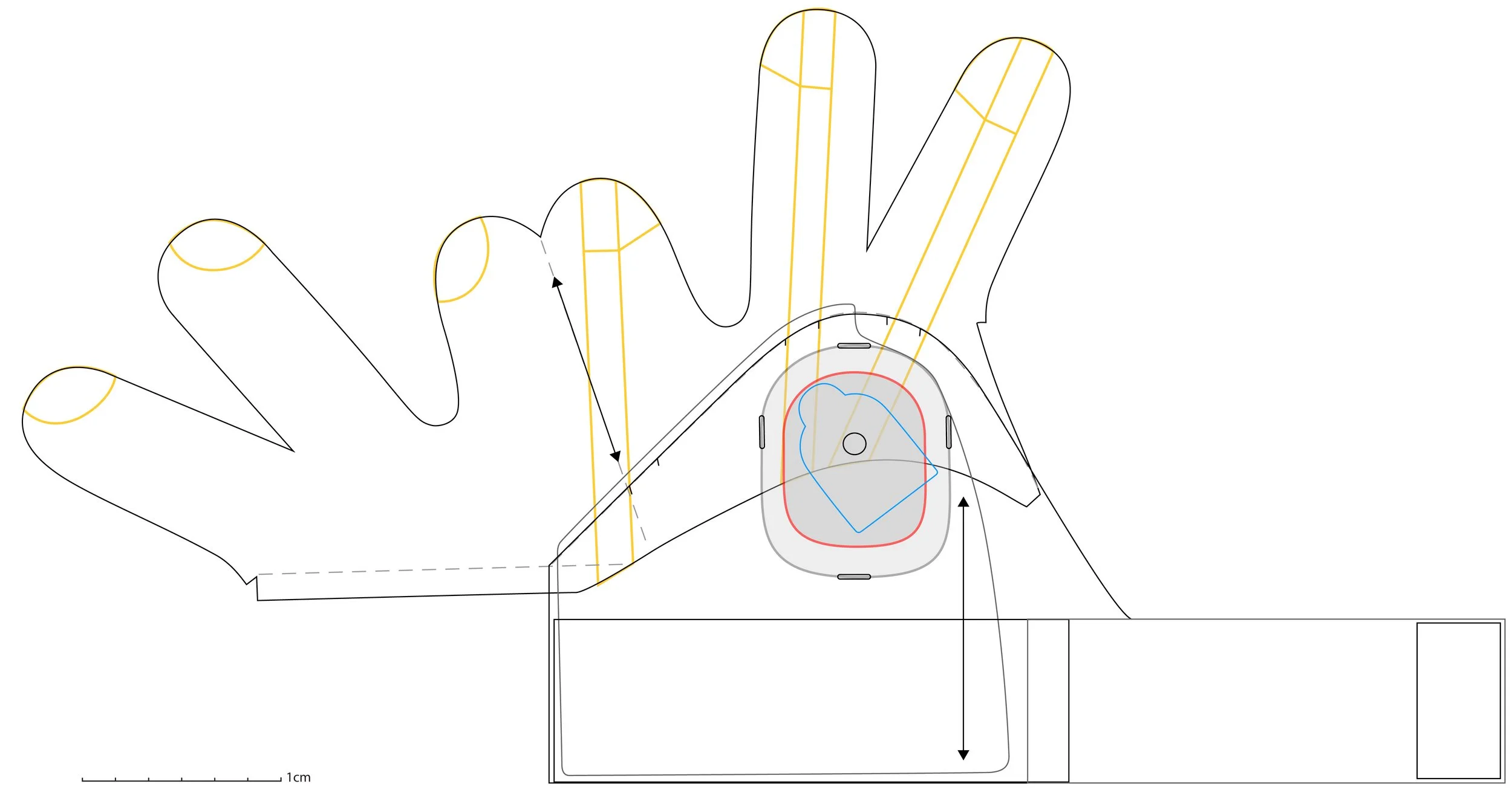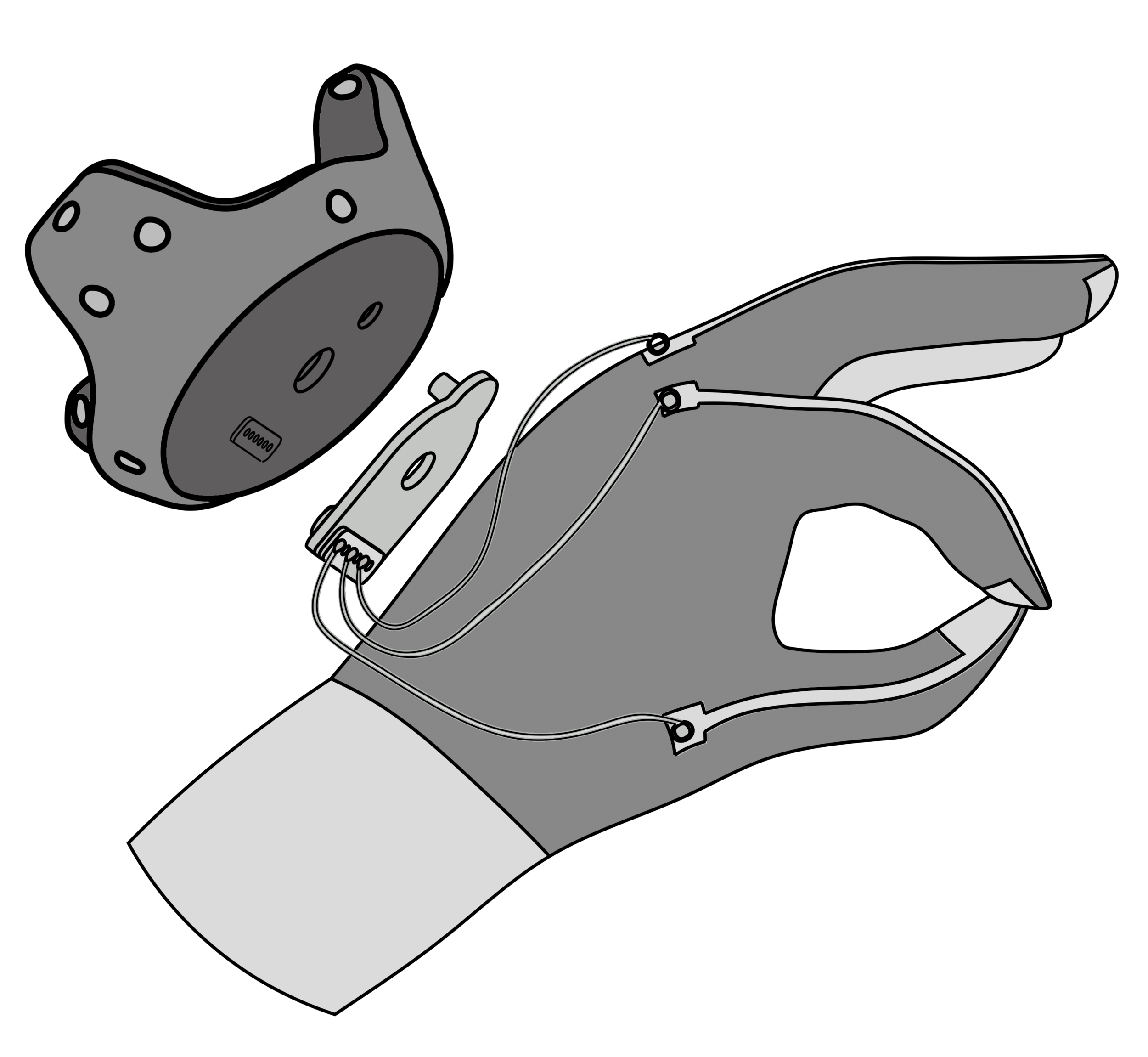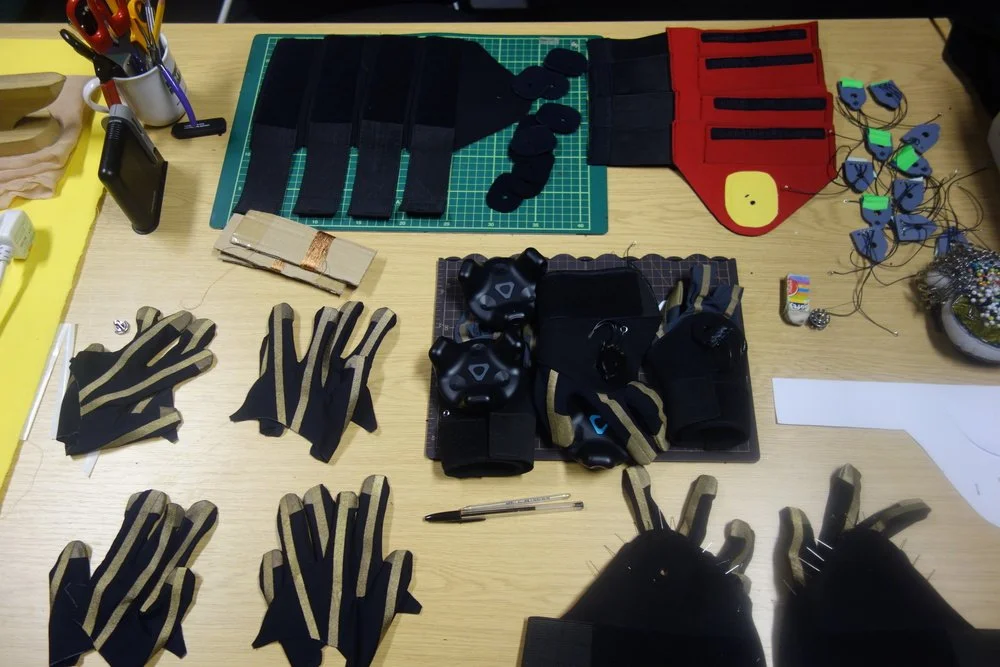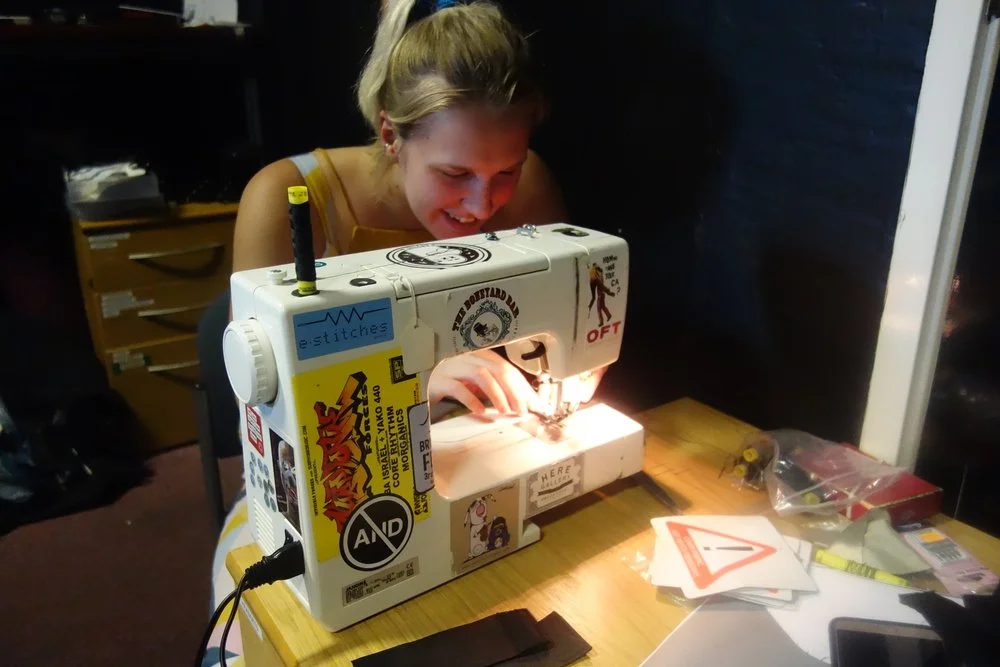OPEN SOURCE ‘MUDRA’ GLOVES
open source ‘Mudra’ gloves designed for the HTC Vive tracker to enable a more fluid and tactile experience in VR
This design is v3 of our open-source VR data gloves, specifically designed to facilitate multi-person interaction of the sort required to carry out careful molecular manipulations during interactive simulations.
They are called 'mudra' gloves because you pinch the index and forefinger with the thumb to make a connection. The current design and mount are for the HTC vive but can be adapted for other systems.
The gloves are designed to be hackable and repairable. In our tutorial we outline one main way to construct the gloves and later will add variations using different techniques and materials.
The gloves are part of a larger research study investigating strategies to move beyond controller-based interaction in VR – ultimately we want to simply reach out, touch, and move simulated molecular objects using our hands and fingers.
Designed to be easy and affordable to reproduce, we held a workshop at the IRL where the whole team contributed to making their own gloves, as well as learning how to repair them.
You can read a paper about the gloves here
TUTORIAL
We have published a full tutorial in the link below. It includes downloadable PDF patterns, detailed materials links and step-by-step instructions of how to construct a glove. You will find links to the 3D print files for the Vive tracker bracket and electronics construction in a separate linked tutorial.
https://www.instructables.com/Etextile-VR-Gloves-for-Vive-Tracker/
This tutorial includes details of how to make both the etextile/electronic textile version (shown in these images) plus a wired adaptation of the same design.
After significant use (beginning approx 50 hours) we discovered the conductive fabric begins to wear and the electronic resistance increases, degrading performance. This requires maintenance and repair. The wired design minimises exposed conductive surfaces and is intended to prolong the life of the glove.
OPEN SOURCE DESIGN
The open-source design is supported by comprehensive online documentation, enabling makers to understand how the glove works and how to combine different construction options. This enables makers to build a glove tailored to their skillset, choose materials that are more readily available, and adapt and develop their gloves to make iterative improvements for the benefit of the open source community, offering a robust and viable application specific alternative to the expensive commercial models.
Moving forward, we plan to carry out more studies to evaluate the extent to which the OMG-VR enables research scientists to carry out complex 3d molecular manipulation tasks like protein-drug binding, and also investigate their utility in other scientific simulation and visualization domains beyond molecular science. We plan to carry out detailed comparisons evaluating the extent to which glove models like these enable researchers to better sense of the systems with which they are interacting. Developing in-house skills though the open source approach makes maintenance and repair easier. We are currently developing tutorials showing alternate construction, repair methods, and a “nosew” version, constructed by modifying pre-constructed gloves, and testing with our user community.












